Introduction to Bathtub Faucet Replacement
How to replace bathtub faucets? Embarking on a bathtub faucet replacement journey reflects both necessity and upgrade. It is crucial to understand the process. This ensures a successful switch from your old faucet to a new one. We will discuss the signs that indicate replacement, the benefits, and what this project entails.
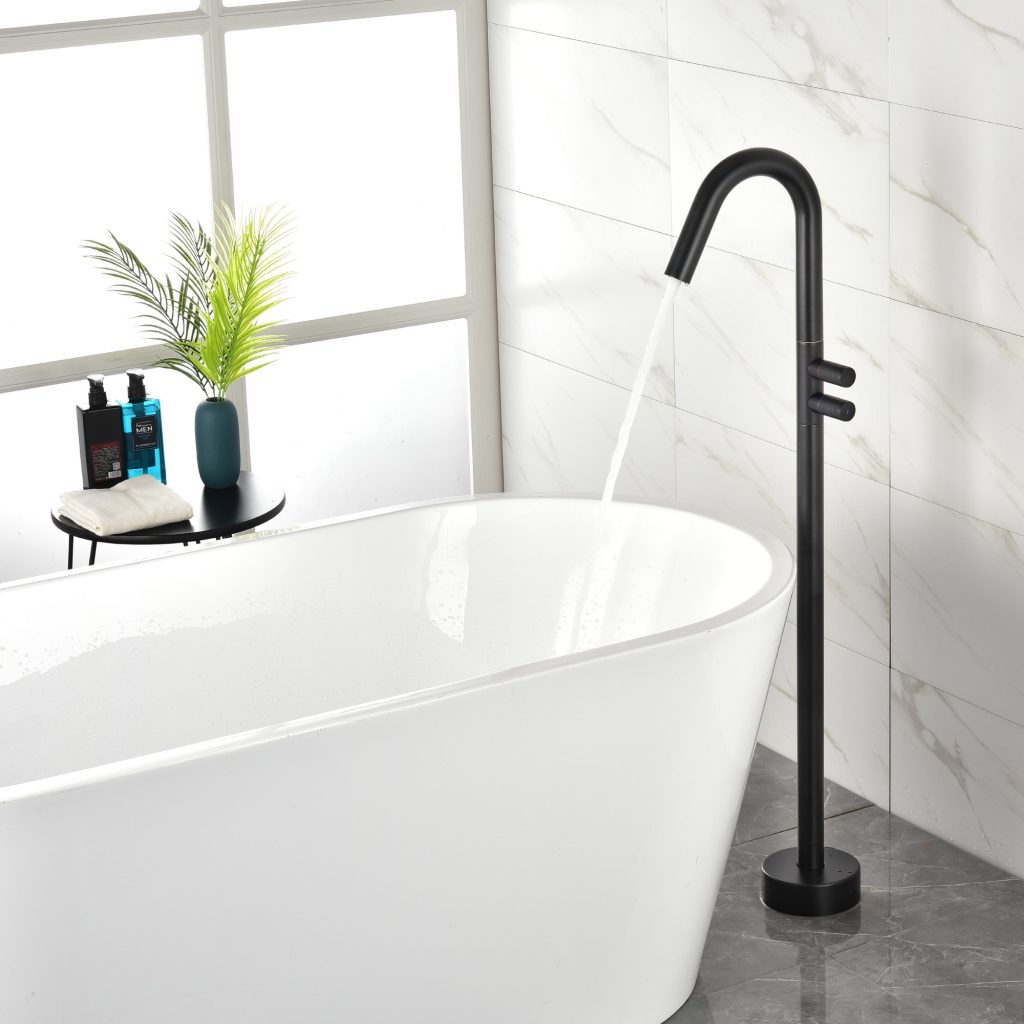
Recognizing When Replacement Is Necessary
It’s important to know when to replace your bathtub faucets. Look for persistent leaks, rust, and difficulty in operation. These signs suggest a need for an update. Acting promptly can prevent further damage or water waste.
Benefits of Replacing Your Bathtub Faucet
Replacing your faucet offers several benefits. It can modernize your bathroom, save water, and reduce potential plumbing issues. An updated faucet often comes with better features and efficiency.
Overview of the Replacement Process
Understanding how to replace bathtub faucets is about more than just aesthetics. It involves shutting off the water supply, removing the old unit, and installing a new one. Let’s explore each step in our comprehensive guide. We guarantee a smoother, more efficient faucet replacement experience.
Tools and Materials Needed for Replacement
Before you start to replace bathtub faucets, gather all necessary tools and materials. Preparation ensures a smooth and efficient process. Here’s what you’ll need:
- Adjustable wrench: To loosen and tighten nuts and bolts.
- Pipe wrench: For gripping and turning pipes when needed.
- Screwdriver set: Different screws may be on the faucet assembly.
- Plumber’s tape: To secure threaded joints and prevent leaks.
- Plumber’s putty or caulk: Essential for sealing the faucet base.
- Allen wrenches: Some faucet handles use set screws requiring an Allen wrench.
- Replacement faucet: Ensure it is the correct type for your bathtub.
- Rag or cloth: For cleaning debris and catching drips.
- Teflon tape: Can be used in place of plumber’s tape for threading.
- Bucket or pan: To catch any remaining water in the pipes.
Gather these items before you begin the tub faucets replacement process. This will prevent any unnecessary trips to the hardware store mid-project. When all tools and materials are at hand, you can work without interruption.
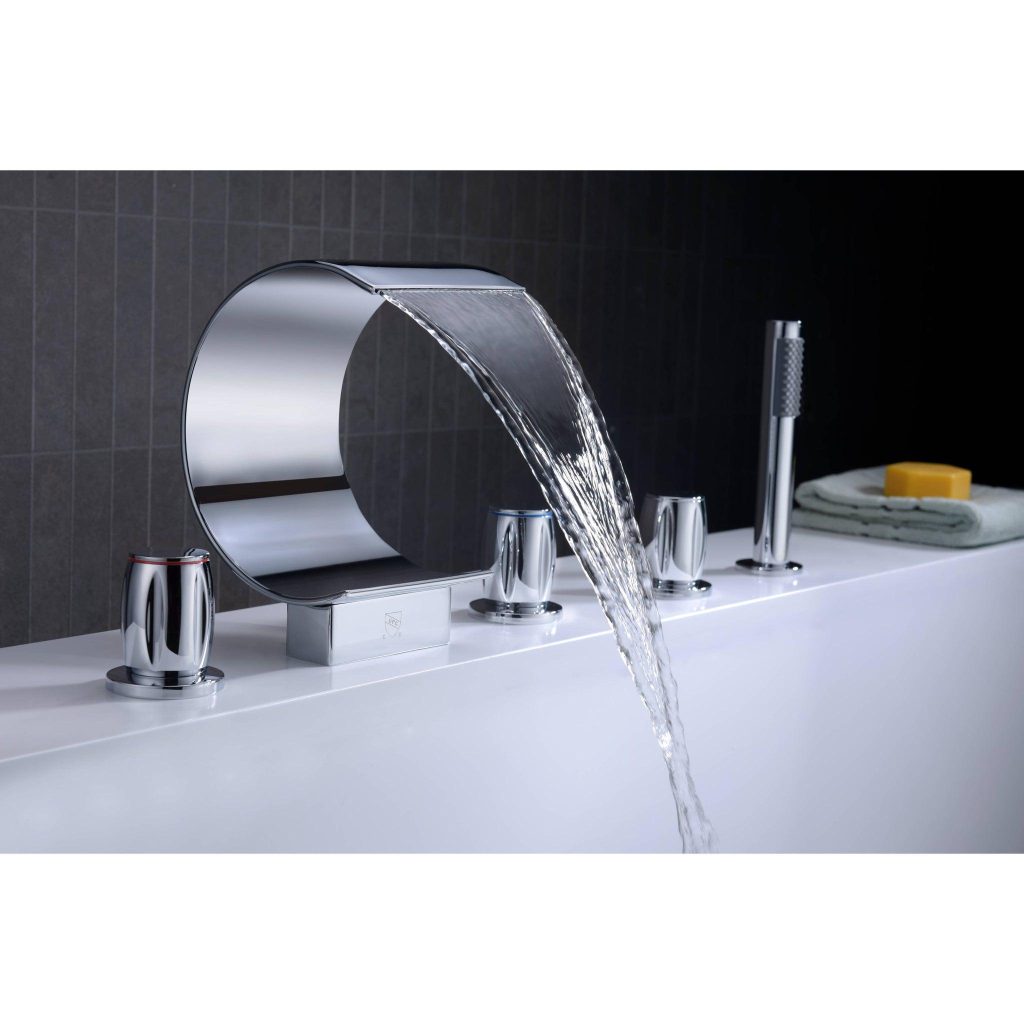
Preparing the Work Area
Before starting to replace bathtub faucets, it’s essential to prepare the work area properly. A well-prepared workspace ensures safety and efficiency during the replacement process. Here’s how to get your work area ready:
- Clear the Area: Start by removing any items from around the bathtub. This includes bath mats, toiletries, and toys.
- Clean the Surface: Wipe down the bathtub surface and faucet to remove any soap scum or debris. A clean workspace prevents dirt from entering the plumbing.
- Place a Towel or Cloth: Lay a towel or cloth in the tub. This helps protect the surface from tools and catches any dropped parts.
- Turn Off the Water Supply: Locate and turn off the water supply to your bathtub faucet. This may be at the fixture shutoff valves or the main water supply to your home.
- Open the Faucet: Once off, open the faucet to relieve any remaining pressure and drain leftover water. This step helps prevent unexpected water flow.
- Ensure Good Lighting: Make sure your work area has enough light. You may need a portable lamp or flashlight to see clearly.
- Secure Pets and Children: Keep pets and children away from the bathroom to avoid distractions or accidents.
By carefully preparing your work area, you’ll set the stage for a smoother faucet replacement. With everything in place, you can proceed with confidence, knowing you’ve minimized the risk of injury or damage.
Removing the Old Bathtub Faucet
Now, you’re ready to start on the key step: removing the old bathtub faucet. This process requires attentiveness and gentle handling to avoid damaging the plumbing. Keep your tools within reach and follow these steps carefully:
- Turn Off the Water: Double-check that the water supply to the faucet is completely shut off.
- Remove Any Covers or Caps: Use a screwdriver to take off any decorative covers or caps that conceal screws.
- Unscrew and Separate: With an adjustable wrench or the correct screwdriver, unscrew the mounting nuts or screws.
- Take Off the Handle: If the sink faucets has a handle, remove it by loosening the set screw with an Allen wrench.
- Disengage the Escutcheon: If there is an escutcheon plate, gently pry it away from the wall or bathtub surface.
- Detach the Spout: Use the pipe wrench to twist and pull the spout away from the wall gently.
- Clean the Area: Once all parts are removed, clean any residual sealant, rust, or debris with a rag.
As each piece comes off, set it aside – you might need to refer to them when choosing your new faucet. Remember to keep a bucket nearby to catch drips from remaining water in the pipes. By following these steps, you’ll have a clean slate for installing your brand new bathtub faucet.
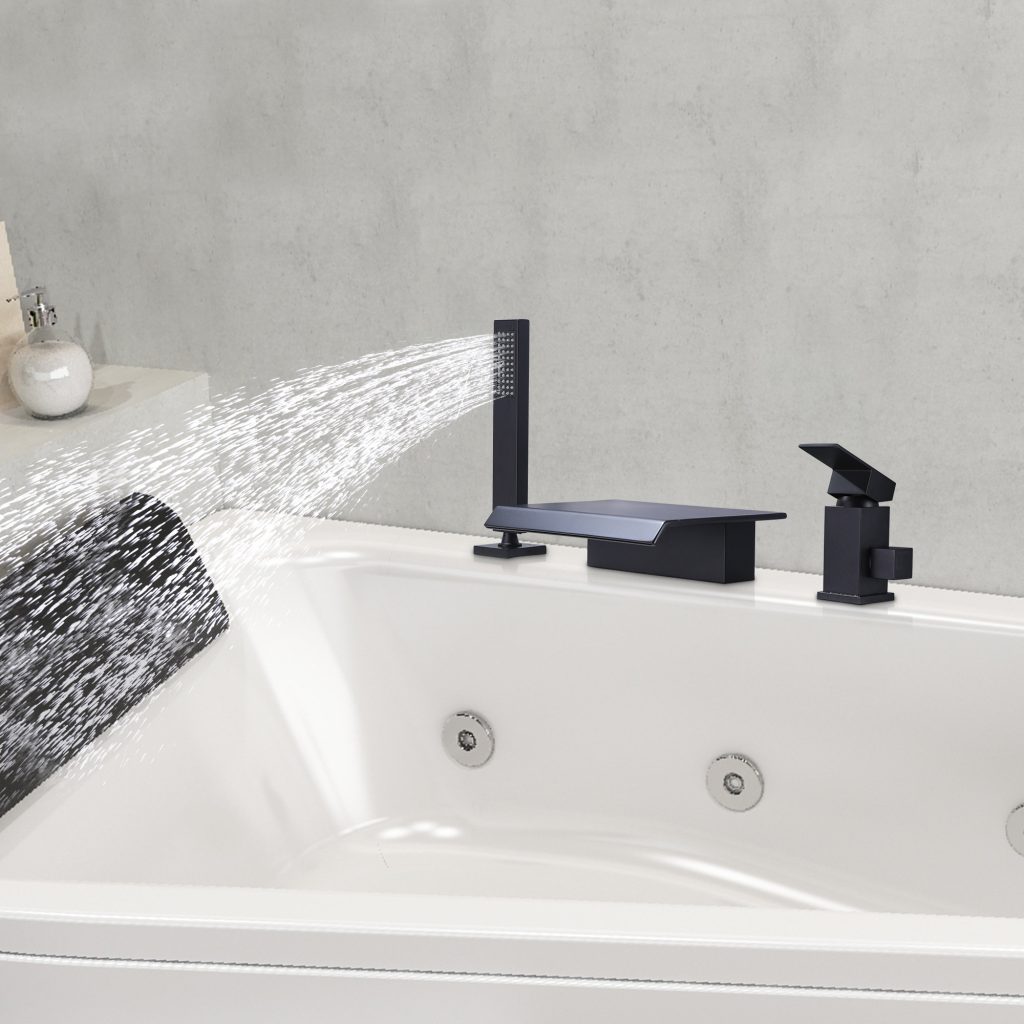
Selecting the Right Faucet for Your Bathroom
Choosing the right bathtub faucet is key to a successful update. You want a balance of style, function, and compatibility. Here are tips to make the right choice:
- Assess Your Bathtub: Check your bathtub’s design and setup. Consider the number of holes and their spacing. This ensures the new faucet fits without extra plumbing work.
- Consider the Style: Look at the current decor of your bathroom. Aim to match your new faucet with the bathroom’s style. Modern, traditional, or transitional – your choice should complement the space.
- Understand Faucet Types: Familiarize yourself with different types of faucets. These include wall-mounted, deck-mounted, and freestanding. Match the type with your bathtub’s design.
- Check the Finish: Faucet finishes vary from chrome to oil-rubbed bronze. Choose a finish that resists water spots and fingerprints. It should also match other metal fixtures in your bathroom.
- Evaluate Features: Modern faucets offer diverse features. From simple flow controls to advanced temperature memory. Decide what features are most important for your bathing experience.
- Mind the Installation: Some faucets are easier to install than others. If you plan to install the faucet yourself, look for one that is less complex.
Take your time to select the faucet that suits your bathroom best. With the right choice, you ensure functionality and enhance the style of your bathroom.
Installing the New Bathtub Faucet
Installing your new bathtub faucet is an exciting step. It means the update is almost complete. Here is a straightforward method to set up your new fixture:
- Inspect the New Faucet: Before installation, examine your new faucet for any damage or missing parts.
- Follow the Manufacturer’s Instructions: Every bathroom faucets is different. Always adhere to the provided guidelines for the best results.
- Seal the Base: Apply plumber’s putty or caulk around the base of the faucet for a watertight seal.
- Position the Faucet: Place the new faucet in the designated holes or mount it onto the wall.
- Secure the Hardware: Use your wrenches to tighten nuts and bolts. Be firm but gentle to avoid over-tightening.
- Attach the Handles: If your faucet model has separate handles, fix them onto the valves.
- Apply Teflon Tape: Use Teflon tape on the threads of pipe connections to prevent leaks.
- Connect the Water Lines: Carefully attach the water supply lines to the new faucet. Make sure the hot and cold lines are in the proper place.
- Check All Connections: Double-check that all parts are secured and there are no gaps.
After these steps, you are almost ready to enjoy a fresh, updated look in your bathroom. A proper installation ensures your faucet functions well and lasts longer. Remember not to rush and to refer to the instructions as needed. In the next section, we’ll discuss how to test your new installation and troubleshoot common issues.
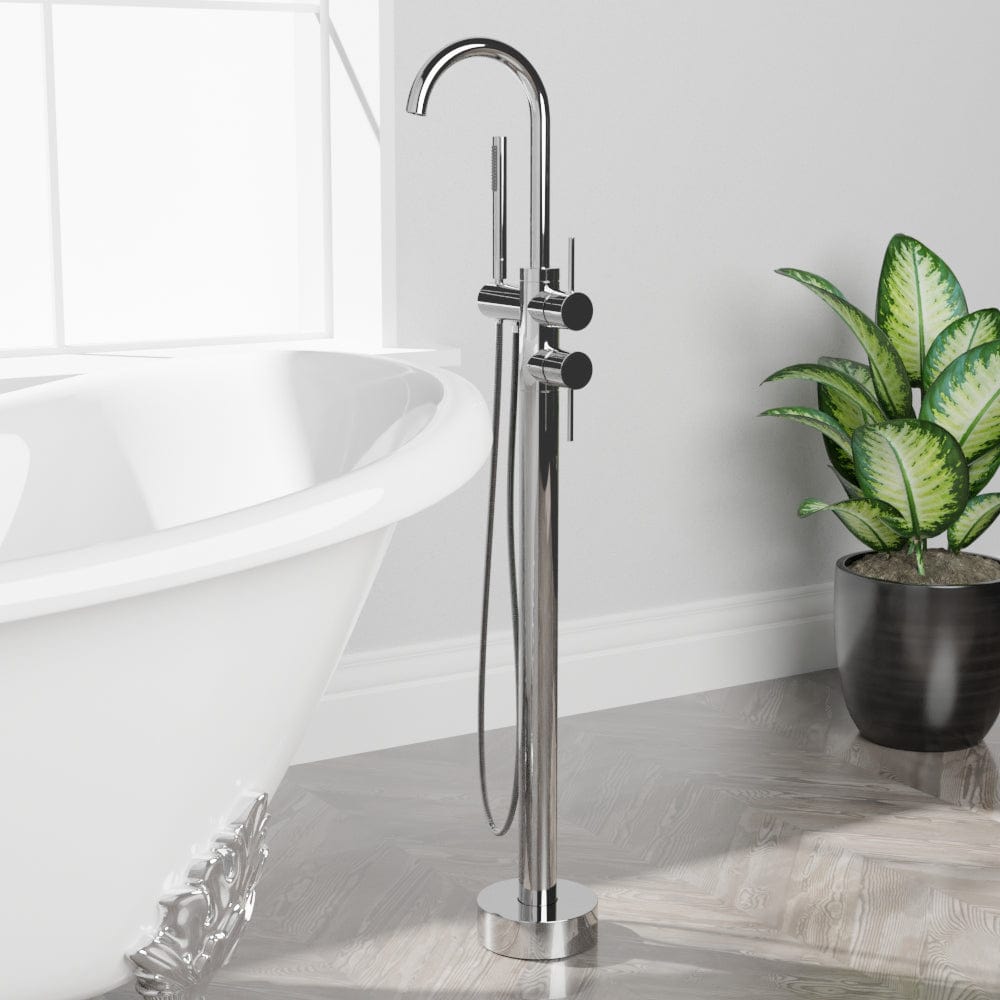
Testing and Troubleshooting
Now that you have installed your new bathtub faucet, it’s vital to test it to make sure everything works properly. Follow these steps to test and identify any potential issues:
- Turn on the Water Supply: Begin by slowly turning the water supply back on. Watch for any immediate leaks.
- Test Hot and Cold: Turn on both the hot and cold water to test. Make sure each temperature works and adjusts smoothly.
- Inspect for Leaks: Check all connections around the faucet, handles, and pipes for drips or leaks.
- Check the Water Flow: Assess water flow through the faucet. It should run without sputters or irregular bursts.
- Test the Drain: Ensure water drains without any back-up or slow draining.
If you find any issues during testing, here are steps for troubleshooting:
- Tighten Connections: If you spot a leak, try tightening the connections with your wrench. Be careful not to over-tighten.
- Reapply Sealant: Should the base of the faucet leak, apply more plumber’s putty or caulk. Allow it to dry fully.
- Flush the Faucet: To fix sputtering water, remove the aerator. Then run water to clear any debris caught in the lines.
Even with careful installation, issues can arise. If problems persist after troubleshooting, consult a professional plumber. They can ensure your new bathtub faucet operates efficiently and safely.
Maintenance Tips for Your New Faucet
Maintaining your new bathtub faucet ensures longevity and optimal performance. Here are tips to keep it in top shape:
- Regularly Clean the Faucet: Use a gentle cleaner and a soft cloth. Avoid abrasive materials that can scratch the surface.
- Inspect for Leaks: Regular checks can catch leaks early. Fix leaks promptly to prevent water damage.
- Check the Aerators: Clean the aerator regularly to prevent lime buildup and ensure smooth water flow.
- Use Plumber’s Tape: When needed, rewrap threads with plumber’s tape to maintain a good seal.
- Tighten Fittings: Every few months, check to see if any fittings have loosened. Tighten them if necessary, but avoid over-tightening.
- Monitor Water Pressure: Too much pressure can strain the faucet. Install a water pressure regulator if needed.
- Avoid Harsh Chemicals: Harsh cleaners can damage the finish. Use mild soaps for cleaning.
- Follow Manufacturer Guidelines: Each faucet may have specific care instructions. Follow them closely.
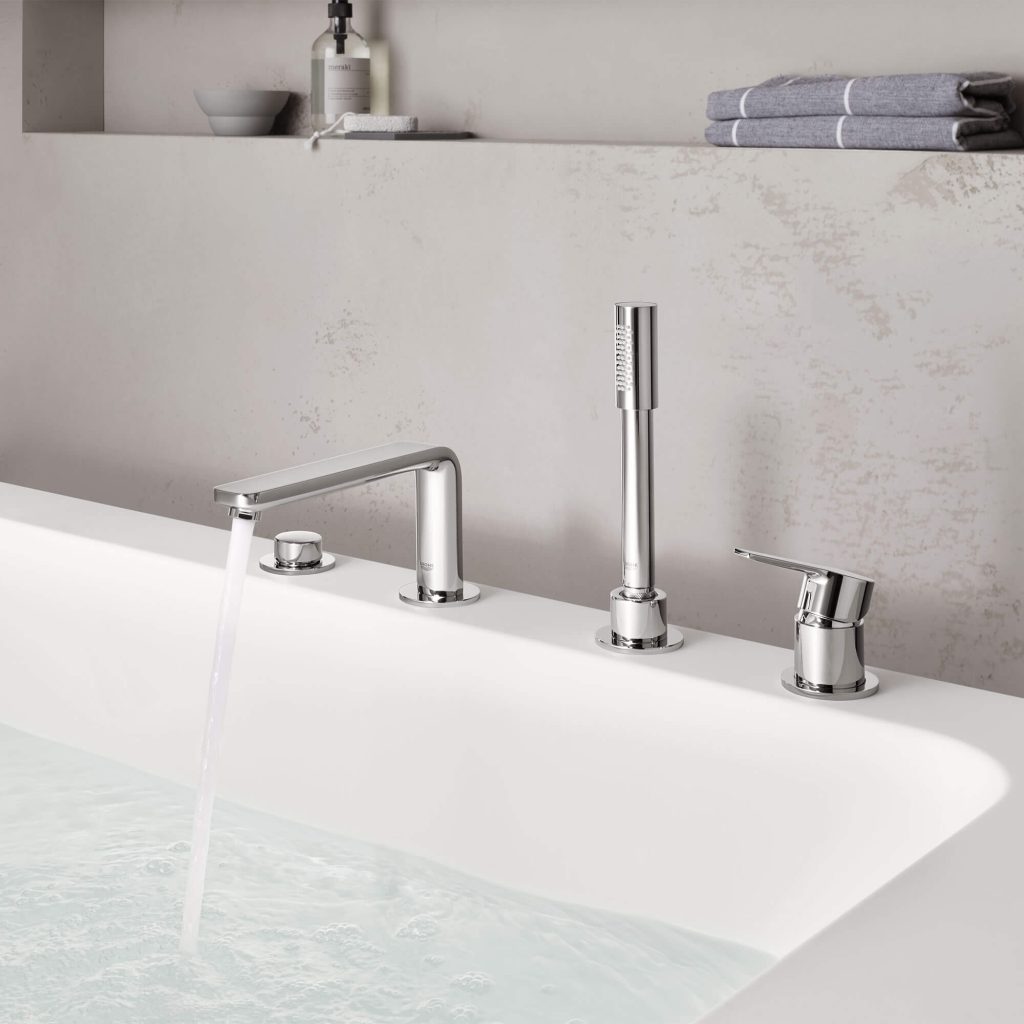
By following these simple maintenance tips, your new bathtub faucet will function efficiently for years to come. Keep these practices as part of your regular bathroom maintenance routine. They’ll help preserve the faucet’s appearance and operation, giving you a hassle-free experience with every use.
